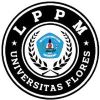Pengembangan Kreativitas dan Kompetensi Analisis Data Kuantitatif untuk Guru-Guru di Kepulauan Seribu
DOI:
https://doi.org/10.37478/abdika.v3i3.3129Abstract
This socialization aims to develop the creativity and competence of quantitative data analysis for teachers in the Thousand Islands. The method of this socialization is delivering material interactively and practically using a laptop. The participants of this socialization were 25 teachers in the Seribu Islands. This socialization was carried out for two days at the Seribu Islands school. This socialization forms teachers into groups to carry out analysis and discuss together. The results of this socialization activity are the conclusions from the results of the questionnaire after the socialization, namely (1) 100% of participants stated that they easily understood the material; (2) 92% of participants stated that the duration of the socialization was following the material presented; (3) 100% of participants stated that the presenters had detailed and clear presentation of the material; (4) 100% of participants acquire new knowledge. The socialization went smoothly because the participants were enthusiastic about practicing quantitative data analysis using SPSS. The obstacle to this socialization is the limitation of the duration of socialization activities.
Downloads
Keywords:
Creativity, Competency development, Quantitative data analysis, Thousand Islands teachersReferences
Briones, E., Gallego, T., & Palomera, R. (2022). Creative drama and forum theatre in initial teacher education: Fostering students’ empathy and awareness of professional conflicts. Teaching and Teacher Education, 117. https://doi.org/10.1016/j.tate.2022.103809
Cattaneo, A. A. P., Antonietti, C., & Rauseo, M. (2022). How digitalised are vocational teachers? Assessing digital competence in vocational education and looking at its underlying factors. Computers and Education, 176. https://doi.org/10.1016/j.compedu.2021.104358
Dusi, P., Rodorigo, M., & Aristo, P. A. (2017). Teaching in our society: Primary teachers and intercultural competencies. Procedia - Social and Behavioral Sciences, 237, 96–102. https://doi.org/10.1016/j.sbspro.2017.02.045
Fleet, L., & Dobson, T. (2023). Growing and fixing: Comparing the creative mindsets of teachers and artist practitioners. Thinking Skills and Creativity, 48. https://doi.org/10.1016/j.tsc.2023.101312
Hidayat, M. L., Hariyatmi, Astuti, D. S., Sumintono, B., Meccawy, M., & Khanzada, T. J. S. (2023). Digital competency mapping dataset of pre-service teachers in Indonesia. Data in Brief, 49. https://doi.org/10.1016/j.dib.2023.109310
Huang, N., Chang, Y., & Chou, C. (2020). Effects of creative thinking, psychomotor skills, and creative self-efficacy on engineering design creativity. Thinking Skills and Creativity, 37. https://doi.org/10.1016/j.tsc.2020.100695
Kim, K., & Kwon, K. (2023). Exploring the AI competencies of elementary school teachers in South Korea. Computers and Education: Artificial Intelligence, 4. https://doi.org/10.1016/j.caeai.2023.100137
López-Martín, E., Gutiérrez-de-Rozas, B., González-Benito, A. M., & Expósito-Casas, E. (2023). Why do teachers matter? A meta-analytic review of how teacher characteristics and competencies affect students’ academic achievement. International Journal of Educational Research, 120. https://doi.org/10.1016/j.ijer.2023.102199
Nyshanova, S. T., Baimukhanbetov, B. M., Abdigapbarova, U. M., & Mukhamedzhanov, B. K. (2014). Developing future teachers creative abilities in competence – Oriented educational process of high school. Procedia - Social and Behavioral Sciences, 116, 4287–4292. https://doi.org/10.1016/j.sbspro.2014.01.933
Runge, I., Lazarides, R., Rubach, C., Richter, D., & Scheiter, K. (2023). Teacher-reported instructional quality in the context of technology-enhanced teaching: The role of teachers’ digital competence-related beliefs in empowering learners. Computers and Education, 198. https://doi.org/10.1016/j.compedu.2023.104761
See, N. L. M. (2014). Mentoring and developing pedagogical content knowledge in beginning teachers. Procedia - Social and Behavioral Sciences, 123, 53–62. https://doi.org/10.1016/j.sbspro.2014.01.1397
Subanji. (2013). Pembelajaran matematika kreatif dan inovatif [Creative and innovative mathematics learning]. Universitas Negeri Malang (UM PRESS).
Surat, M., Abdullah, N. A. G., Tahir, M. M., Nor, M. F. I. M., & Utaberta, N. (2011). An effective teaching and learning approach for the architectural program with reference to the framework of educational psychology. Procedia - Social and Behavioral Sciences, 18, 227–234. https://doi.org/10.1016/j.sbspro.2011.05.032
Taneri, B., & Dogan, F. (2021). How to learn to be creative in design: Architecture students’ perceptions of design, design process, design learning, and their transformations throughout their education. Thinking Skills and Creativity, 39. https://doi.org/10.1016/j.tsc.2020.100781
Thwe, W. P., & Kálmán, A. (2023). The regression models for lifelong learning competencies for teacher trainers. Heliyon, 9(2). https://doi.org/10.1016/j.heliyon.2023.e13749
Zabelina, D. L., & Ganis, G. (2018). Creativity and cognitive control: Behavioral and ERP evidence that divergent thinking, but not real-life creative achievement, relates to better cognitive control. Neuropsychologia, 118, 20–28. https://doi.org/10.1016/j.neuropsychologia.2018.02.014
Zhang, W., Xu, F., & Sun, B. (2020). Are open individuals more creative? the interaction effects of leadership factors on creativity. Personality and Individual Differences, 163, 1–7. https://doi.org/10.1016/j.paid.2020.110078
Downloads
Published
How to Cite
Issue
Section
License
Copyright (c) 2023 Flavia Aurelia Hidajat, Wardani Rahayu, Meiliasari Meiliasari

This work is licensed under a Creative Commons Attribution-ShareAlike 4.0 International License.










